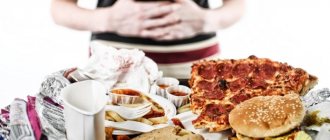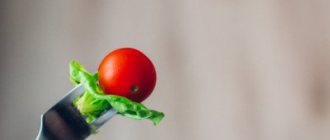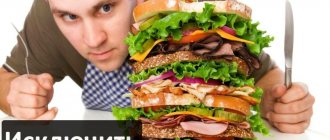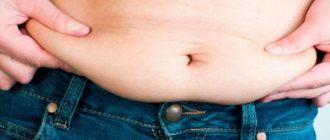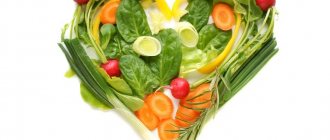When faced with the problem of anorexia nervosa, many nutrition consultants and nutritionists are confused. This is truly a special category of clients who require an individual and very sensitive approach. If the management strategy for people with anorexia is incorrect, all attempts to return them to normal life will be in vain, because they are much more susceptible to breakdowns than anyone else.
Today, experts from the School of Dietetics at the Wellness Consulting Academy will tell you how to correctly prescribe diet therapy to clients with anorexia so that it brings results...
Diet rules for anorexia
Nutrition for anorexia is one of the important treatment methods along with psychotherapy. The diet for anorexia is aimed at ensuring that the patient gains weight and returns to his usual lifestyle. Depending on the stage of the disease, anorexia is treated in a hospital or prescribed dietary nutrition at home. The latter is indicated when the patient’s life is not in danger.
A diet for anorexia should be prescribed by a doctor.
Enteral nutrition for anorexia is selected taking into account the characteristics of the patients. Therapeutic nutrition for anorexia is carefully developed by a nutritionist and must meet a number of rules:
- The diet for anorexia should be balanced.
- The amount of food is calculated for each patient individually.
- Proper nutrition for anorexia implies the mandatory presence of liquid and semi-liquid foods.
- The patient needs to eat fresh vegetables, fruits and berries every day. You can eat them whole or puree them.
- The diet of an anorexic includes grains (porridge, grain bread, cookies), low-fat fish, meat (chicken, rabbit, turkey), and dairy products.
- It is necessary to observe the principle of fractional nutrition: there should be 3 main meals and several light snacks.
- It is important to maintain water balance - the daily intake of clean still water should be 1.5-2 liters.
Portions should not be very large or very small; you must adhere to the doses recommended by the nutritionist. Restoring nutrition after anorexia is not an easy task. The patient must monitor his diet to prevent a relapse.
The role of the nutritionist in the recovery phase of anorexia nervosa
When the client’s life is no longer in danger, the nutritionist consultant should immediately get to work. Here it is important to use not a directive, but a loyal method of communication, refuse to criticize the client’s actions, and show restraint and patience.
There is serious, difficult work ahead to return a person to normal life, so there is no need to rush, so as not to make mistakes. Meetings with the client should be frequent and regular - at least 2-4 times a month. This is required in order to constantly monitor the dynamics of his condition, make timely adjustments to the diet, and monitor the client’s psychological and physiological status.
The most important thing is to correctly assess the client’s readiness for the changes proposed by the nutritionist. There is no point in forcing events, because this will only increase the likelihood of a breakdown and relapse of anorexia. That is why there is no general diet therapy scheme for such clients; everything is very individual and largely depends on the psychological state of the person.
Do not forget that people with anorexia should not know about the calorie content of the diet prescribed to them, the amount of protein, fat and carbohydrates in it, as this can provoke a desire to again control their food and weight, reducing the amount of food they eat and resorting to deception.
Also, do not tell the client about his actual weight and body composition; under no circumstances should he know about the increase in fat mass. It is advisable that there are no scales at home, talk about this with his relatives, ask him to get rid of this measuring device (at the same time you can hide a centimeter, which is used to measure the volume of a figure).
Useful foods for anorexia
Nutrition for anorexia at home should be soft and gentle. It is especially important to follow this rule at the very beginning of treatment to avoid irritation of the gastrointestinal mucosa and spontaneous rejection of food.
Nutrition should be healthy and balanced
Recommended list of products for anorexic patients:
- lean fish (pollock, blue whiting, bream);
- chicken and turkey meat;
- cereals;
- bakery products;
- fruits, berries, vegetables, herbs;
- nuts;
- honey;
- butter, vegetable oil;
- hard low-fat cheese.
If we talk about fruits, the most high-calorie and most suitable for people with pathological appetite disorders are banana, pear, and apple. Pay attention to cereals such as rice, buckwheat and oatmeal. Anorexics can also eat ice cream without preservatives, with nuts or raisins.
Herbalists recommend taking herbal decoctions during treatment, which help normalize metabolic processes in the body and weight gain. Let's look at a few recipes.
Ingredients:
- Calamus root - 2 tsp.
- Water - 200 ml.
How to prepare : Grind the root, place it in a thermos and pour boiling water over it. Leave for 10-12 hours. Strain.
How to use : Take 50 ml 20 minutes before each meal.
Result : Affects the endings of taste buds, increases appetite, improves digestion.
The following recipe is also easy to prepare.
Ingredients:
How to cook : Pour boiling water over the seeds. Leave until completely cooled, strain.
How to use : Take 100 ml 30 minutes before meals.
Result : Normalizes the functioning of the gastrointestinal tract, improves appetite.
Causes of anorexia
The exact cause of anorexia is difficult to name.
This is a complex disease that can occur due to a combination of several factors.
It can begin after a stressful event, such as a breakup, moving to a new place, or the passing of a loved one.
May be caused by hereditary biological and genetic characteristics. For example, innate traits such as perfectionism and sensitivity, which are associated with the development of anorexia, may predispose a person to an eating disorder.
Twin studies have shown that 30-75 percent of anorexia cases are due to genetic predisposition.
Modern Western culture places a strong emphasis on thinness, especially for women. Many equate self-esteem, success with their weight and size, which forces them to go to extreme measures to achieve the ideal.
A person who experiences strong social pressure is more likely to suffer from anorexia. This phenomenon is common among teenagers, who are heavily influenced by the opinions of their peers.
Anorexia can affect people of all ages, but it is most common in young people, most often in teenagers and least often in those over 40.
Approximately 90-95 percent of all cases of anorexia occur in girls or women.
Cases of anorexia in the family
If someone in the family (parent, child or sister) suffered from anorexia, this increases the risk.
Models, athletes and entertainers (dancers, actors) are at risk because they feel more pressure to look a certain way.
Turning points in life
Any major life change, such as changing schools or jobs, breaking up with a partner, or losing a loved one, can increase the risk of developing anorexia and similar eating disorders.
Low self-esteem, strong and painful experiences, and psychological trauma often contribute to the development of anorexia.
Harmful foods for anorexia
Of course, not all foods are suitable for anorexia. It’s not difficult to guess which of them are harmful. Even an ordinary person who does not suffer from any pathologies should not include them in their diet or minimize their consumption.
Foods prohibited for anorexia:
- canned meat;
- canned fish;
- sausages, smoked meat;
- dried, dried, smoked fish;
- spread, margarine;
- snacks;
- sweet carbonated drinks.
We would like to draw your attention to the fact that during the period of rehabilitation therapy it is generally better to avoid any preservatives. These include pickled vegetables and fruits. Pay attention to the shelf life: if it is 3 months or more, it is better not to include such products in your diet.
During treatment, also do not overuse pasta and artificial sweets. If you really want something sweet, eat some natural dark chocolate.
Consequences of anorexia
The impact of anorexia on a person's health can be very severe.
Even before the physical symptoms of this disorder appear, it affects almost every system of the human body. She's like an aggressive form of cancer
, which will not stop until it wins.
This illness has the highest mortality rate of all mental illnesses.
And the longer a person suffers from anorexia, the higher the risk of death becomes. Some of the effects of this disorder can last a lifetime, but early intervention can prevent some of them.
Heart diseases
Fasting, overeating, and purging lead to electrolyte imbalances. Electrolytes such as sodium, potassium and chloride help regulate the heartbeat.
When a person suffers from dehydration, levels of electrolytes such as potassium decrease, which can lead to cardiac arrhythmia.
- irregular heartbeat. Although in many cases arrhythmia is harmless, sometimes it can be very dangerous and even lead to cardiac arrest.
In addition to heart rate, anorexia also affects heart size.
. When people fast and lose weight, they lose not only fat, but also muscle mass.
Since the heart itself is a muscle, fasting can lead to a decrease in the weight and size of the heart cavity.
It is also worth remembering that in order for the heart to beat, the lungs to work, and the blood to flow through the veins, the body needs energy.
Fasting causes an energy crisis, and in response to this, the body literally slows down and tries to conserve the remaining energy needed to perform basic life functions.
In addition to slowing down metabolism, heart rate slows down and baricardia occurs.
. While the average heart beats at a rate of approximately 80 beats per minute, anorexics may have a heart rate as high as 25 beats per minute.
Bone problems
About 80 percent of women suffering from anorexia have a disorder called osteopenia
– loss of bone calcium, and 40 percent have
osteoporosis
– loss of bone density.
More than two-thirds of children and adolescents with anorexia will not develop strong bones during the critical period of growth. This is one of the irreversible consequences of this disease.
Neurological disorders
In advanced cases, a person with anorexia may experience nerve damage that affects the brain and other parts of the body. As a result, there is a risk of such violations as
Numbness or tingling in the arms and legs (peripheral neuropathy)
Brain scans of anorexics show that the brain undergoes structural changes or abnormal activity during the illness. Some damage may last a lifetime.
Anemia
Due to fasting, people suffering from anorexia often develop anemia. This problem is primarily associated with very low levels of vitamin B12.
When the disease is advanced, the production of blood cells in the bone marrow is significantly reduced. This condition is called pancytopenia, which can also be life-threatening.
Stomach problems
Anorexia puts a lot of stress on the digestive system. Bloating and constipation are very common problems among anorexics.
Since anorexia is often associated with bulimia (increased hunger), constant purging and vomiting can expose the digestive system to excess stomach acid and lead to inflammation of the esophagus, gastritis and ulcers.
Organ failure
In the later stages of anorexia, a person's body organs simply stop working. One of the first indicators of organ failure is high levels of liver enzymes.
To prevent this, immediate caloric intake is necessary.
Amenorrhea and infertility
The hormonal changes that occur with anorexia can have very serious consequences for women. Reproductive hormone levels decrease and stress hormone levels increase. The result is amenorrhea, which causes women to stop menstruating and ovulating.
.
If treatment is started and weight is regained, estrogen levels may return to normal and the menstrual cycle may return, but sometimes it never returns.
If pregnancy occurs, the risk of miscarriage, the birth of a premature baby and a child with congenital developmental defects increases significantly.
Diabetes
In young people with type 1 diabetes, low blood sugar may pose an increased risk. Particularly dangerous is a condition known as diabulimia, which occurs when a person deliberately reduces their daily dose of insulin in order to lose weight.
Very high blood sugar levels lead to diabetic ketoacidosis, in which ketones accumulate, which can lead to coma and death.
Diet for anorexia
The diet for anorexia is aimed at smooth weight gain . Nutritionists have developed a sample menu for anorexia. But we want to repeat that each case is considered individually.
Breakfast options:
- omelette or 2 boiled chicken eggs, coffee or tea with cream;
- buckwheat or rice with milk, tea with sugar or honey, oatmeal cookies;
- casserole of low-fat cottage cheese with dried fruits and nuts, cocoa;
- sandwich with butter, cheese, ham, herbs, fresh vegetables and compote.
The main and evening meals may consist of the following dishes:
- vegetable soup with chicken broth, fresh vegetable salad;
- buckwheat porridge, baked lean pork, turkey or chicken;
- chicken broth, vegetable puree;
- boiled fish, mashed potatoes with milk and butter;
- steamed fish or meat cutlets, vegetable stew, bread.
Anorexics are recommended to consume infant formula as a second dinner. They contain a large number of useful micro- and macroelements and promote weight gain.
Consume freshly squeezed vegetable and fruit juices as snacks. It is advisable to dilute them with boiled water in a 1:1 ratio. Fruit purees, cookies, buns, and muffins are also good options. Be sure to include nuts, dried fruits, sunflower and pumpkin seeds in your diet. Do not forget that during this period it is very important to restore the normal functioning of the gastrointestinal tract. This is facilitated by fermented milk drinks (kefir, fermented baked milk, yogurt).
Even when you have been diagnosed with anorexia, you should not suddenly change your diet after illness. It is advisable to adhere to this diet for a couple of months after enteral therapy.
For more information about anorexia, watch the video:
Increase your calorie intake
Try to eat dense foods, they contain a lot of calories. At the same time, make sure that these foods are healthy, such as dark chocolate, nuts, avocados, whole grain breads and pastas, meats, fatty fish, etc. There are other foods that are loaded with calories, such as fast food, fried potatoes, all kinds of fatty snacks and desserts, etc. They can also help you gain weight quickly, but consuming them in excess can lead to health problems. In addition, the weight gained with their help will consist mainly of unhealthy fats. To avoid eating too large portions, season them with natural sauces and spreads, they are also rich in calories. Large amounts of calories can also be found in 100% fruit juices, 2% milk, sports drinks, smoothies and shakes.
What to remember
- The anti-anorexia diet is developed by doctors individually for each patient. Of course, there are general rules, but do not neglect going to the doctor. Anorexia is a serious disease that leads to degeneration of all internal organs, and in some cases, to the death of the patient.
- Nutrition for this disease should consist of 3 main meals and several snacks. Nuts, freshly squeezed vegetable and fruit juices, and fermented milk products are recommended as additional nutrition.
- During rehabilitation therapy, avoid products with long shelf life and preservatives. In your case, you need fresh vegetables, fruits, berries, lean meats and fish.
Please support the project - tell us about us
Diet
People trying to regain their weight after anorexia may find it difficult to find the right diet and eating habits. Be sure to contact a nutritionist with such questions. To ensure proper weight gain without harm to health, many factors must be taken into account, such as gender, age, fitness level, etc. How Simply Recommends Why the medicine doesn’t work The key to successful treatment is, of course, following all the doctor’s recommendations and informing him of all significant changes during therapy. However, a specialist can talk as much as he wants about the regimen and duration of taking the drug, but most patients will still violate these rules. Read more
Nutrition for anorexia - how to restore normal weight

Anorexia is a psychopathological disorder that is characterized by obsessive thoughts about allegedly excessive body weight or a pathological fear of weight gain.
The disease leads to decreased appetite, complete or partial refusal to eat, and can provoke “starvation” or suicide. To prevent this from happening, it is important to organize proper nutrition for anorexia.
ANOREXIA
We know a lot about the main signs of anorexia, which they like to attribute to everyone: unhealthy thinness, strict restrictions on food, or refusal to eat at all. Since anorexia is also a psychological story, it is not so easy to decipher it. Moreover, people suffering from this disorder, as a rule, do not scorch themselves: they actively pretend that they are eating, but in fact they throw food out the window, flush it down the toilet, feed it to the dog and use other tricks to get the dish past the stomach. Sometimes those suffering from this disease take up sports, but they do it not for the sake of the abs, but to lose the hated (and, as a rule, non-existent) excess weight. Anorexics have one thing in common: they suffer from a distorted perception of their own body. They seem bigger and fatter to themselves than they actually are. Moreover, self-flagellation occurs not only from the inside, but also from the outside: anorexics can injure themselves, thus punishing themselves for what they have eaten. Because of this, sick people become irritated over trifles, complain of insomnia and cannot jump out of a state of depression. They avoid other people in every possible way, fearing that they will be taken to the table and forced to drink and eat under supervision.
Basics
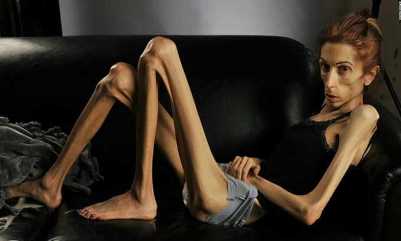
The diet for the treatment of anorexia is aimed at gradually increasing body weight and obtaining all the substances necessary for normal functioning. For this purpose, a special menu is developed in each individual case.
A healthy diet is a core part of your eating disorder treatment plan. It is important that the diet helps you get the right amount:
Nutritionists recommend

For anorexia, it is recommended to adhere to fractional meals (read – https://www.diet-menyu.ru/diety/drobnoe-pitanie.html). This means 3 main meals and several additional ones (in small portions). Nutritionists also advise not to overload the body with high-calorie foods and products, because it takes a lot of time to digest and assimilate.
Deadly diet stop anorexia
The disease, the main syndrome of which is lack of appetite, progresses at incredible speed. Increasingly, you can see emaciated girls in newspapers, on television and in everyday life. The most incredible thing is that they don’t seem like that to themselves. Girls susceptible to this disease believe that they are far from the ideal of slimness, and they need to continue to lose weight. It's only when they admit they have anorexia and know they need to get out of it that it's often too late for them to simply start eating normally. Their digestive system, in fact, dies off as unnecessary. To recover, you need not only psychological motivation, but also proper nutrition for anorexia to restore the lost functions of the stomach and intestines.
Principles of nutrition in the early stages of anorexia
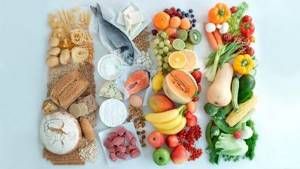
The main rule is to follow a nutrition plan developed individually, strictly, refusing large portions and strict restrictions in the choice of foods. The menu is prepared by a qualified nutritionist.
The early stage of anorexia is treated with simple diets that you develop on your own. Introduce complex foods into the menu gradually.
For gradual weight gain without side effects, follow the nutritional principle.
- The first week is adjustment. The emphasis is on liquid or semi-liquid dishes, always low in calories. For example, porridge with water, low-fat broth, soup, puree.
- Second week - raw vegetables and fruits, fresh berries are introduced.
- Third week - broths are consumed with chopped dietary meat. Add low-fat steamed or boiled fish, cook porridge with milk, and add freshly squeezed vegetable and fruit juices. An exception is that citrus juices are diluted with water.
- Fourth week. If there is no discomfort, meat dishes (not fried), rye bread, and vegetable salads are added to the menu. Spices are added to food.
- When adhering to a diet, pay attention to the body’s reaction to new foods. If gastrointestinal problems appear at a certain stage, it is recommended to return to the diet of the second week.
Permitted and prohibited products
A recovery diet for anorexia should be used carefully, especially when it comes to expanding the diet. The table below shows a list of allowed and prohibited foods for eating disorders.
| Authorized Products | Prohibited Products |
| Meat (chicken, turkey, beef, lean pork) | Canned meat and fish |
| Fish (pollock, cod, mackerel) | Products containing preservatives and dyes |
| Vegetable oils, natural butter, cheeses | Spread |
| Fruits and sweet berries (banana, pear, apple, blueberry, raspberry) | Margarine |
| Fermented milk products (cottage cheese, sour cream, milk, yogurt, cream, kefir, fermented baked milk) | Highly fatty foods |
| Raw vegetables, purees, juices (beets, carrots, turnips, zucchini, potatoes) | Artificial sweets |
| Durum wheat pasta | Spicy seasonings |
| Cereals (oatmeal, rice, semolina, millet, buckwheat) | Industrial mayonnaise, sauce |
| Greens (cilantro, dill, parsley, green onions) | Pomegranate |
| Nuts, dried fruits, seeds | Dogwood |
| Chocolate, honey, jam, jam | Cherry |
| Soybeans, legumes | Fast food |
| Baby formula | Sausages |
| Vegetable and fruit juices, kvass, sweet tea, jelly, decoctions of medicinal herbs | Sausage |
| Pastries, bread, cookies, muffins, pastries and cakes with natural creams | Canned vegetables |
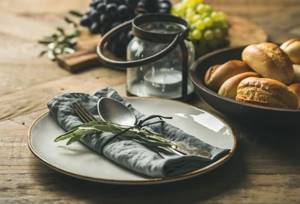
A balanced diet is the key to recovery from an eating disorder
Diet for the stages of combating anorexia
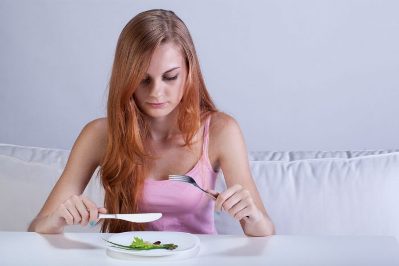
A sample menu could look like this. The main thing is that you need consultation and approval from your attending physician.
Breakfast to choose from
- 200 grams of flax (or oatmeal) jelly, weak black tea;
- boil two eggs, green tea;
- a sandwich with a piece of unsalted cheese, herbs, tomato, a cup of cocoa;
- rice 100 g, oatmeal cookies 50 grams, freshly squeezed juice from vegetables;
- 200 g low-fat cottage cheese casserole (add dried fruits and nuts), berry compote.
- 200 milliliters of chicken broth (skin removed), 100 grams of vegetable puree;
- 250 ml vegetable soup, lettuce leaves, seasoned with vegetable oil.
For dinner at your discretion
- 200 grams of lean fish (bake or boil), 150 g of mashed potatoes with the addition of milk or butter;
- steamed chicken or fish cutlets, vegetable salad.
How to eat to gain weight with anorexia, Women's Health Magazine
Good afternoon Over the past six months I have lost more than 10 kg. Now my weight is 41 kg with a height of 167 cm. I am 20 years old. I really want to gain weight, I constantly want to eat, but I’m afraid to suddenly break down and start devouring food uncontrollably, so I continue to limit myself very much. How to properly build a diet to achieve healthy weight gain? Do you need to eat when you want or on a schedule? How to calculate BZHU and what products to focus on? I would be very grateful for your help.
So, what weight can be considered underweight? So, if your body mass index is less than 18, then you are underweight. and if the BMI is less than 15, then this is an acute lack of body weight and in this case you should definitely gain weight! Because a lack of fat is a threat to both the immune system and the reproductive system - the menstrual cycle is disrupted, and there is a real problem getting pregnant.
So, let's gain weight! Where to begin?
It is very important, if possible, to perform bioimpedance measurement - a study of body composition, which will help to identify exactly how many kilograms of fat and muscle tissue are missing from the norm, as well as to determine how severe dehydration is (if there is insufficient body weight, this also happens).
So, everything is done. We are starting to gain weight. I’ll say right away that this thing is complicated. And it is necessary to follow not only recommendations on nutrition, but also on other aspects of life, so to speak.
You should immediately remember that in order to properly gain weight, you need to almost double the average caloric intake of your diet. So, protein requires about 2 grams per kilogram of body weight, fat - about 2 grams per kilogram of body weight, carbohydrates - up to 8 grams per kilogram of body weight. The total calorie content of the diet is approximately 3,000 kcal. So you have to try! Moreover, the diet should contain complete proteins, complex and simple carbohydrates, as well as fats - animal and vegetable.
You should eat often, in small portions. breakfast, lunch, dinner and three snacks. High-calorie foods - such as nuts, seeds, vegetable oil, as well as sweets - are allowed - what a blessing! Any young lady who is losing weight would give a lot for a day of such a life! Fast food is not welcome, but sometimes it is possible. Therefore, a couple of pieces of pizza or dumplings for lunch - please! Or a portion of pasta with cutlets. Here's what a typical diet looks like
Breakfast. (1 option)
- Any porridge (rice, buckwheat, oatmeal and even semolina), cooked in milk with the addition of a tablespoon of butter and sugar (honey, jam) - a handful of any nuts - 2-3 oatmeal cookies, spread with chocolate or peanut butter - cocoa in milk with sugar or coffee with milk
- Omelette of 2 eggs with cream, cooked in 1 tbsp vegetable oil - 50 g ham or bacon - 2 toasts from bran bread - Cheese (50 g) can be grated into the omelette - 2 any vegetables - 50-70 g casinaki or halva - coffee or tea with sugar
-sweet cottage cheese casserole made from cottage cheese 19% (200 g). drizzled with honey, sprinkled with dried fruits and nuts - 3-4 chocolates
-hot sandwich: Baguette (150 g) cut lengthwise, put inside 50 g cheese, 1 chopped tomato, 100 g ham or 2 milk sausages, 1 tbsp flaxseed oil) - a handful of nuts and dried fruits - cocoa or tea with milk
-2 any fruits - A handful of nuts
- Chicken or turkey. baked in the oven with skin (200 g) or quick-fried pork steak. or grilled salmon (200 g) (or cutlets from them) - side dish (rice, buckwheat, mashed potatoes) with 1 tsp vegetable oil - bread (50 g) - vegetable salad
-Half a serving of gainer Or -protein-carbohydrate bar Or - 1 bun
- fish (preferably fatty varieties) (150 g) or seafood (200 g) - rice or bulgur with 1 tbsp olive oil - kefir 3.2% (200 g)
An hour and a half before bedtime cocktail: 100 g cottage cheese 19% + 2 tbsp honey + glass of milk + 1 banana Or half a serving of gainer
As you can see, the diet is rich. Protein-carbohydrate bars and protein-carbohydrate mixtures - gainers, which you will find in sports stores or in the bars of fitness clubs - will help - they already contain the ideal combination of proteins - fats and carbohydrates. necessary for a high-quality increase in both fat and muscle tissue. It is very important to understand that for proper weight gain you need to focus not only on fats and carbohydrates. but also for protein, which is absolutely necessary for building muscle tissue.
